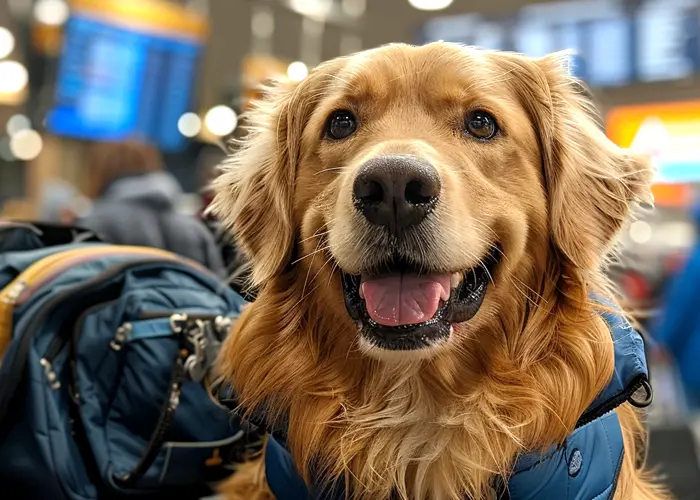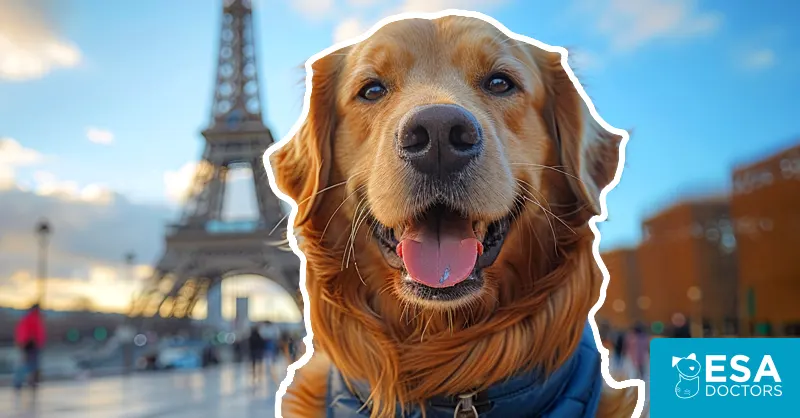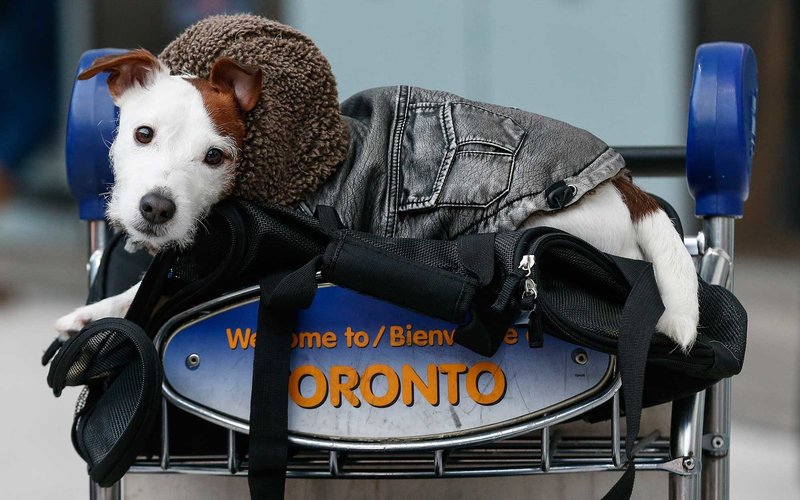It’s becoming easier and easier to travel overseas with your pets, whether they’re companions, emotional support animals, or service dogs, including PSDs (psychiatric service dogs). Coming back to the USA from Mexico, Europe, Canada, and anywhere else has also become more manageable, but not without its own unique challenges.
No matter where you enter the USA from, you have to meet the requirements of the federal guidelines managed by APHIC (Animal and Plant Health Inspection Service). These include guidelines for everything from hedgehogs that have visited countries where Foot and Mouth disease is abundant to dogs that were enjoying some playtime with livestock and animals on a farm while you wine-tasted in France. You can read the current guidelines for dogs here.
The good news is that the restrictions by animal are easy to follow and pretty painless if you come prepared. In most situations, it is meeting with your pet’s veterinarian for a checkup before leaving, knowing what the foreign government is expecting, and not doing these things while you’re overseas.
For example, instead of a wine tasting on a farm outside of Paris where cattle are kept, go to a tasting room without livestock or animals. The same applies to vacationing in Mexico. Many tequila farms have tasting rooms, so you don’t need to visit their ranch. Save that for a trip without your furry friend.
There are things to note with specific animal types, like pet birds, for which the government is currently charging a $40 to $190 fee (as of May 17, 2024) for birds that are re-entering the USA from Canada, depending on whether they travel by air or land. There are other policies from Mexico and other regions specific to birds, so APHIC created dedicated pages for each to make it simpler. You can find them on this page about halfway down for up-to-date information.
But again, don’t stress; these guidelines are easy to comply with, and you won’t have to worry if you travel prepared. This is to protect your best friend and all of the other pets and animals in the USA.
However, there’s one more nuance to know before bringing your pet back to the USA after traveling overseas.
Each state will have different rules and requirements that you have to meet, depending on where you re-enter the USA. For example, you could be entering the USA through Niagara or JFK, and NY state requires that dogs have a veterinary inspection within the last 30 days, which may only apply if you’re planning on living there. If you are overseas for more than 30 days, you’ll need to find out if visiting a local veterinary office in a foreign country will count. If not, you may want to enter through a different state.

Hawaii is the most strict as they have not had an indigenous case of rabies and have a quarantine policy that may or may not be able to be avoided. You can read more about the current requirements here.
Traveling overseas with your pet is doable and rewarding when done correctly. Check the laws for the country you’ll be visiting as well as both the federal and state laws where you’re re-entering the USA. If you travel prepared, you’ll be able to enjoy the trip with your pet and not be stuck in limbo with paperwork and potential separation.
Need a PSD letter from a licensed therapist?
See if you have a qualifying disorder for a PSD in 3 easy steps.





Leave a Comment